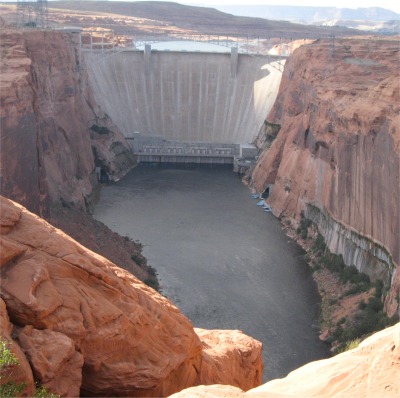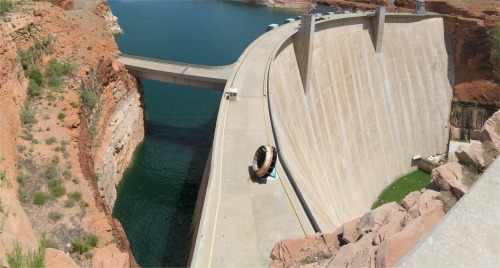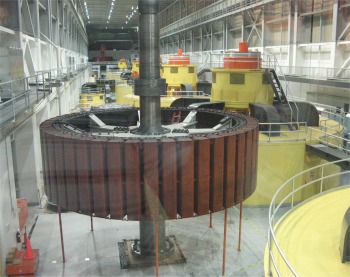I drove off to Kayenta some 50+ miles away, but that was my direction of travel anyway, hoping to find a bank there. There was.
This bank was definitely open, it had half the Navajo nation inside it. I joked with the woman in front of me, asking, "Is this a 30 min. queue or a 2 hour queue?". I realised from her puzzled expression that I had made a drop off, the word 'queue' was not in the American vocabulary, the correct word was 'line'. She explained that it was not only the weekend coming up, but it was a long weekend due to Independence Day.
The standard procedure in the bank seemed to be that when a teller received a new customer, there was a warm handshake followed by a short gossip on all the news. Then when the transaction was completed, there would be another handshake. I was treated no differently by Nathaniel, my Navajo teller person.
I then made my way up to Page and popped into the information centre to check the status of the campsites. I was told they would all be full due to the Independence Day weekend, but I might strike it lucky with a cancellation. I was very lucky, I got the only pitch there was available; was I pleased. The extra pleasing feature was that it was at the Wahweap site, right beside beautiful Lake Powell in the heart of Glen Canyon.
 Lake Powell |
Major John Wesley Powell led the first organised expedition down the Colorado River in 1869. Powell named many features along the river, including Glen Canyon. An early writer about water issues and limits in this arid country, Powell was eventually honoured by having the lake named after him.
 Glen Canyon Dam |
10 million tons of concrete and seven years of extraordinary work later, the dam was completed. It took 17 years for Lake Powell to fill, but it should be borne in mind that the Colorado had to be kept flowing downstream in the meanwhile. The primary aims of the dam are to produce electricity and to manage water storage and distribution. The authorities are duty bound to let so much water flow down the Colorado which would be essential to irrigation etc further down stream. The dam acted as an insurance policy for times of drought.
 Close-up of Dam |
The last tour was at 4pm, so I turned up at the desk with 20 mins. spare and asked if there was still room for one more. "There is room on the 3pm tour, sir, if you'd like to take that one". I looked at my watch, and then at the girl. She knew my thoughts, and explained to me that I was now in Arizona State which had the same time as Pacific Summer Time. The Navajo Reservation where I had been for the last three days worked with Mountain Summer Time, even though a large chuck of it was in Arizona. I just nodded and changed my watch. 3pm came, and we were told that the 3pm tour was cancelled because of the high winds. It was windy at the visitor centre next to the canyon, but down on the top of the dam it caught the winds howling up through the canyon and was a lot worse. The 15:30 was still on, so I and another band of happy souls took in the guided tour onto the dam, and also down to an observation deck in the turbine hall. I wanted to ask more questions, but when the girl guiding us started explaining how DC from the turbines went into the transformers and came out as high voltage AC, I didn't bother. I did explain later to her, but my words fell on stony ground.
 Turbine Hall |
It was now dark, and perhaps in the mid 80s, as I drove back to the campsite. There were two things I needed in life most at that point in time, lots of liquids and sleep. I took time out at the campsite to just sit and stare in wonderment at the heavens. There was very little light pollution out here, and the milky way graced the skies like a scarf of lace frozen in time, shrinking all I had seen so far into insignificance in the overall universal plan.
